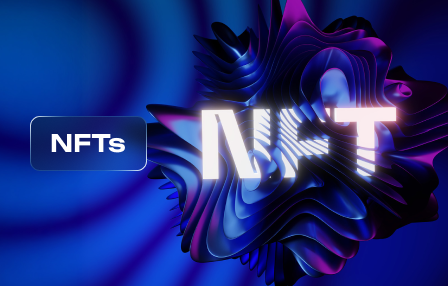How to Read Crypto Charts Without Being an Expert
May 15, 2025
To effectively analyze cryptocurrency markets, focus on key indicators such as moving averages and relative strength index (RSI). These tools help identify significant trends and potential market reversals. By studying historical data, you can recognize patterns that often precede price movements, making it easier to devise a winning strategy.
Pay close attention to trading volume, as it provides insights into the strength of price movements. High volume during an uptrend signals strong buying interest, while low volume may indicate weakness. Additionally, monitor signals from various technical analysis tools to gain a comprehensive view of market sentiment.
Investing in cryptocurrency requires an understanding of market dynamics. Utilize charting software to visualize price action and incorporate multiple indicators for better decision-making. By mastering these techniques, anyone can enhance their ability to interpret crypto charts and make informed investment choices.
Understanding Chart Types
To effectively analyze cryptocurrency markets, familiarize yourself with the various chart types. Each type serves a distinct purpose and can offer unique insights into market trends and price movements.
Line Charts provide a simple visual representation of price changes over time. They connect closing prices, allowing investors to quickly identify trends. Use line charts for a high-level view when evaluating long-term strategies.
Candlestick Charts are more informative, displaying open, high, low, and close prices within a specific timeframe. Each candlestick represents a trading period and includes color coding to indicate bullish or bearish movement. Look for patterns such as dojis or engulfing candles to identify potential reversal signals.
Bar Charts share similarities with candlestick charts but emphasize open and close prices using bars instead of filled shapes. This format is beneficial for spotting support and resistance levels through the visualization of price ranges.
Volume Charts illustrate trading activity over time, highlighting market interest in specific cryptocurrencies. Analyze volume alongside price movements to confirm trends; increased volume during uptrends may signal strength in buying pressure.
Area Charts, like line charts but filled beneath the line, present data in an aesthetically pleasing way. These charts help visualize price movements while emphasizing overall trends without overwhelming detail.
Select the appropriate chart type based on your analysis goals–whether identifying short-term patterns or long-term investment strategies. Combining different chart types enhances your ability to interpret data effectively and make informed decisions in the cryptocurrency market.
Key Indicators Explained
Focus on volume and price trends to gauge market momentum. Volume indicates the number of assets traded within a certain timeframe; high volume often confirms price movements, while low volume may signal uncertainty.
Moving Averages (MA) are crucial for identifying trends. The Simple Moving Average (SMA) smooths out price data over a specified period, revealing underlying patterns. The Exponential Moving Average (EMA) gives more weight to recent prices, making it responsive to new signals.
Relative Strength Index (RSI) helps assess whether a cryptocurrency is overbought or oversold. An RSI above 70 indicates overbought conditions, while below 30 suggests oversold. Use this indicator to identify potential reversal points in the market.
Bollinger Bands consist of a middle band (SMA) and two outer bands that represent volatility. When prices touch the upper band, it may indicate an overbought condition; conversely, touching the lower band suggests an oversold state. This pattern can assist in predicting future price movements.
MACD (Moving Average Convergence Divergence) provides insights into trend strength and potential reversals by analyzing the relationship between two EMAs. Look for crossovers as trading signals: when the MACD line crosses above the signal line, it may suggest buying opportunity; crossing below could indicate selling pressure.
Utilize these indicators collectively for deeper analysis rather than relying on any single one. Combining trends, patterns, and signals enhances your decision-making process in cryptocurrency investing.
Identifying Trends Quickly
To identify trends in cryptocurrency charts effectively, focus on recognizing patterns such as higher highs and higher lows for bullish trends or lower highs and lower lows for bearish ones. Use trend lines to connect these points visually, which helps clarify the market direction.
Implement moving averages as indicators to smooth out price fluctuations. The 50-day and 200-day moving averages are particularly useful; a crossover can signal potential trend reversals. Pay attention to volume spikes accompanying price movements, as they often indicate strength behind a trend.
Fibonacci retracement levels can also be instrumental in spotting potential reversal points within existing trends. Analyze how prices react at these levels to refine your entry and exit strategies.
Utilize momentum indicators like the Relative Strength Index (RSI) and Moving Average Convergence Divergence (MACD) to gauge overbought or oversold conditions, enhancing your ability to predict trend continuations or reversals.
Stay updated with news affecting the cryptocurrency market, as external factors can rapidly shift trends. Combining technical analysis with fundamental insights will provide a more comprehensive approach to identifying trends quickly.
Common Mistakes to Avoid
Avoid relying solely on one type of data when analyzing cryptocurrency charts. Diversifying your analysis across multiple indicators can provide a clearer market picture.
- Ignoring Volume: High trading volume often confirms price movements. Failing to consider volume can lead to misinterpretations of trends and patterns.
- Chasing Trends: Entering the market during a surge without adequate research can result in significant losses. Always analyze the sustainability of trends before investing.
- Overcomplicating Strategies: Using too many indicators may cloud judgment. Focus on a few key indicators that align with your strategy for better clarity.
- Neglecting Time Frames: Different time frames can yield varying signals. Analyze short-term and long-term trends to avoid misleading conclusions.
- Emotional Trading: Decisions driven by fear or greed often lead to mistakes. Stick to your strategy, regardless of market fluctuations.
- Ignoring Market News: Major events or announcements can significantly impact cryptocurrency prices. Stay updated with relevant news to inform your decisions.
Avoid these pitfalls for a more informed approach to cryptocurrency investing and enhance your ability to analyze market trends effectively.



